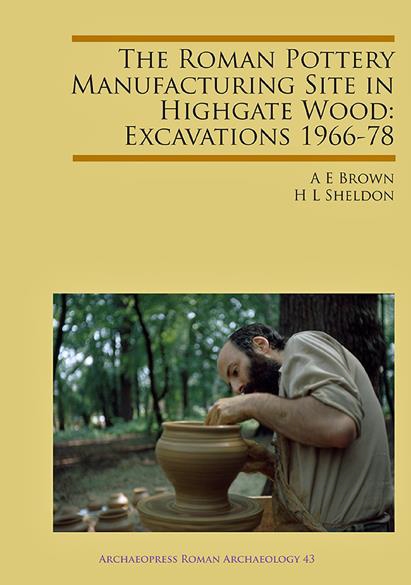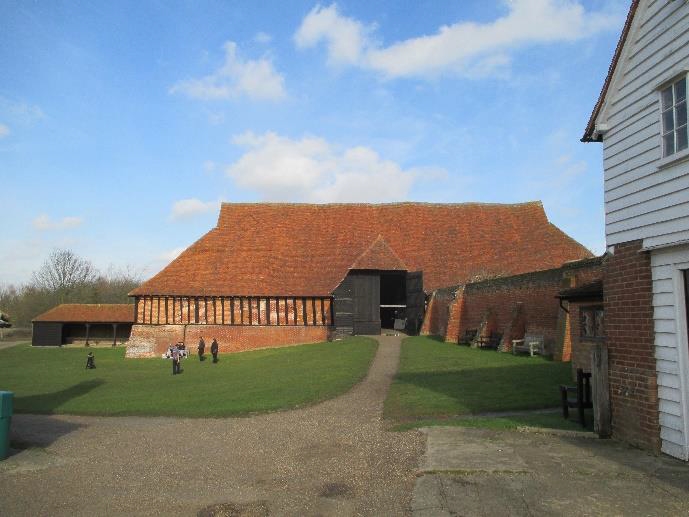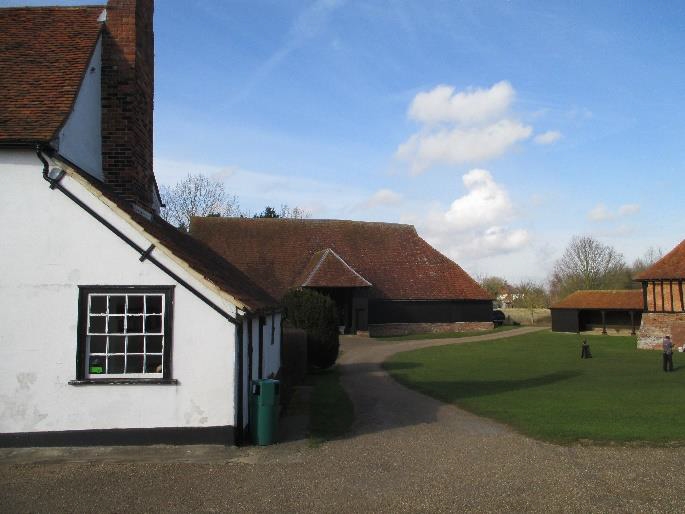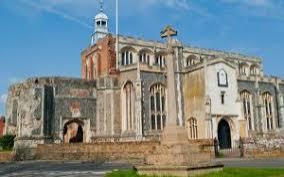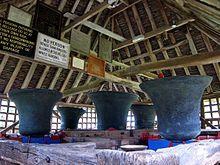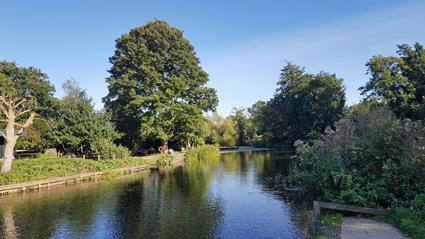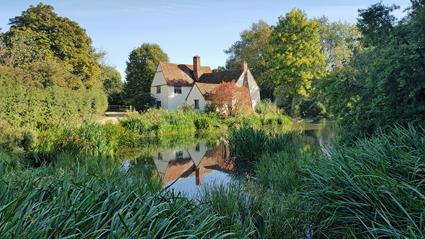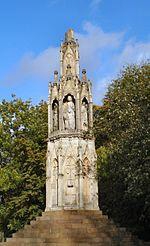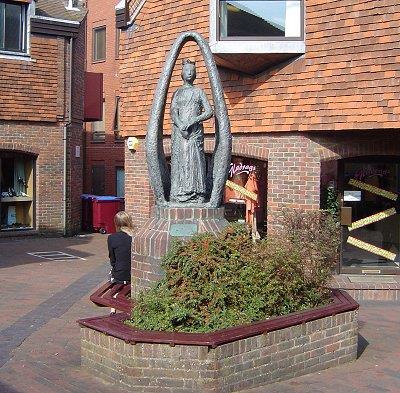No. 572 NOVEMBER 2018 Edited by Sue Willetts
_________________________________________________________________________________________________________________________
HADAS DIARY – Forthcoming lectures and events Lectures, the finds group course, and the film are held at Avenue House, 17 East End Road, Finchley N3 3QE. Buses 13, 143, 326 & 460 pass close by, and it is five to ten minutes’ walk from Finchley Central Station (Northern Line). Tea/coffee and biscuits follow the lecture.
Sunday 9th December – HADAS Christmas Lunch at Avenue House. 12:30 – 4 p.m. £30 including full Christmas dinner. See p.2.
Tuesday 8th January 2019 NO LECTURE
Tuesday 12th February 2019. Jon Cotton Prehistory in London – some Problems, Progress and Potential
Tuesday 12th March 2019. John Clark Lost and Found: the Rediscovery of Roman London
Tuesday 9th April 2019. Gustav Milne The CITiZAN Project
Tuesday 14th May 2019 Lyn Blackmore (but waiting for final confirmation) Crosse and Blackwell factory excavations
Tuesday 11th June 2019 ANNUAL GENERAL MEETING
Tuesday 8th October 2019 To be arranged. Tuesday 12th November 2019 Bob Cowie Shene and Syon: a royal and monastic landscape revealed
For your diary – 2019 Long Trip
We have booked the hotel for our long trip in 2019. Details will follow in due course.
The hotel is: Best Western Aberavon Beach Hotel, Aberavon Beach, Port Talbot, SA12 6QP
Dates Monday 23rd to Friday 27th September 2019
Cost will be slightly higher than 2018 because of the increasing cost of fuel for the coach.
If you are interested, please let Jim Nelhams know (treasurer@hadas.org.uk)
Battle of Barnet Project
We were pleased to receive from the above a card saying: “Thank you for being part of the Battle of Barnet Project”. This is in recognition of our help with the test-pitting and other associated actions.
Although no site for the Battle of Barnet…….
Remember, Remember, Remember to sign up for the HADAS Christmas party.
The party is on December 9th, 2018, between 12.30pm and 4.00pm at Avenue House, 17 East End Road, N3 3QE. The party is for HADAS members and their guests. The price is £30 per person.
Send remittances to Peter Pickering, 3 Westbury Road, Woodside Park, London N12 7NY
Or pay directly to: Account title: HADAS, Bank code: 40-52-40 Bank account: 00007253
Please title the payment “HADAS Party 2018”
HADAS vacancy
As Jim Nelhams, who has been HADAS treasurer for the last ten years plus, has decided to stand down at next year’s AGM, HADAS is in dire need of a replacement.
Could you manage HADAS’ treasury function? If you could we would love to hear from you.
To discuss this vacancy and what the role entails please contact me (Don Cooper) by any of the various methods below. (See last page of the newsletter)
PS An assistant editor to help Sue Willetts in preparing the newsletter for printing would be very welcome. Please contact Don Cooper to discuss this role.
Exciting archaeology news from the Black Sea and Pompeii Sue Willetts
A merchant ship, thought to be Greek, dating back more than 2,400 years has been found lying on its side off the Bulgarian coast. The 23m (75ft) wreck, found in the Black Sea by an Anglo-Bulgarian team, is being hailed as officially the world’s oldest known intact shipwreck. See the BBC website for more information: It was discovered with its mast, rudders and rowing benches all present and correct just over a mile below the surface. A lack of oxygen at that depth preserved it, the researchers said. The principal investigator of the Black Sea Maritime Project (MAP) is Professor Jon Adams – his view is that this will change our understanding of shipbuilding and seafaring in the ancient world.
In Pompeii a new coloured fresco has been discovered in the House of the Enchanted Garden, so called due to the variety of animals and plants that decorate its walls, which was partially excavated in the 19th century but the frescoed room has only now been found. The director of the site is Massimo Osanna. The frescoes include the figure of a horse, birds in flight and a strange human figure with a dog’s head. The main room is believed to be a lararium, a room designed to hold the images of the lares, divine protectors.
For more information and images from the Daily Telegraph – click here – or look out for more coverage to come in the archaeology press.
New Publication Information from Don Cooper The Roman Pottery Manufacturing Site in Highgate Wood: Excavations 1966-78 by A. E. Brown and H. L. Sheldon.
This book co-authored by our president Harvey Sheldon has, after a long germination, finally been produced. It is being sold by Archaeopress and is priced at £60. I know it is expensive, but you can also download it as a pdf from the link to the Archaeopress site below.
Perhaps one of our Romanists would like to write a review in due course.
See http://www.archaeopress.com/Public/displayProductDetail.asp?id=%7B7915E40D-7B87-49DD-B1CC-08D5FDABB505%7D The following text is taken from the publicity for this volume.
Excavations over a period of eight years uncovered at least ten pottery kilns, waster heaps, ditches and pits, but only a few definite structures. The pottery from the site indicates a period of operation extending from the first half of the 1st century AD to the later 2nd century. The pottery made at the site included initially a vegetable tempered handmade ware, but subsequently the bulk of it consisted of a grog tempered ware and then pottery in a sandy fabric which is well known from assemblages in London. The type of kiln varied with the pottery fabric; there was possible evidence for a pre-Roman pit firing, and later kilns set in ditches were of the twin flued type, eventually replaced by the more familiar above ground kilns with raised floors. Changes in pottery fabric were reflected in different methods of clay preparation, which led to changes in the function of the various ditches, the stratigraphy of which, along with the variation in the fabrics, was significant in enabling the four broad phases into which the site has been divided, to be proposed.
The report includes a very detailed analysis of the forms and fabrics of the pottery made at Highgate. Finds of prehistoric flintwork and pottery during the excavation, and of material of later date, together with the observation of earthworks and historical research, have been used to show the place of the pottery kilns as an element in the exploitation of the woodland of northern London over the last eight thousand years.
London Archaeologist 50 (1968-2018): an archaeological conference held in London
Robin Densem
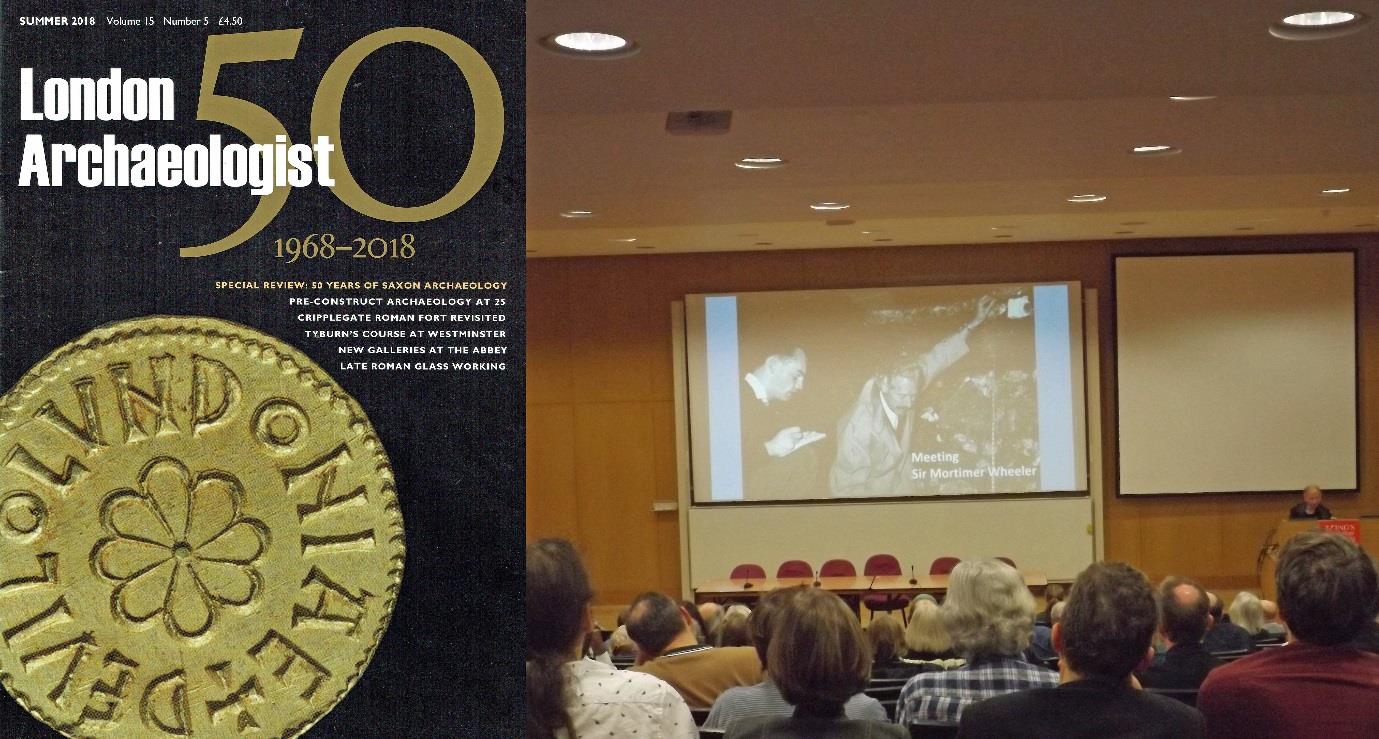 I went to an archaeological conference on 6th October 2018. The conference, at King’s College London, was attended by some 200 amateur and professional archaeologists, and others, and was held to celebrate fifty years of the London Archaeologist magazine that had been founded in 1968. I saw at least two other members of HADAS there, including Harvey Sheldon who was co-chairing the proceedings.
I went to an archaeological conference on 6th October 2018. The conference, at King’s College London, was attended by some 200 amateur and professional archaeologists, and others, and was held to celebrate fifty years of the London Archaeologist magazine that had been founded in 1968. I saw at least two other members of HADAS there, including Harvey Sheldon who was co-chairing the proceedings.
The publication is an A4 sized quarterly magazine that presents archaeological research and excavation reports; interviews; finds, artefact, and bioarchaeology studies; book reviews and an events diary, and it is probably well known to our members.
The magazine contains articles from writers across the archaeological spectrum in London, on topics ranging from human skulls in the Walbrook, to community archaeology in Fulham, to Tudor bee boles in Greenwich.
London Archaeologist is run by a completely voluntary team elected annually each May at the AGM. The production of the magazine, marketing, membership and financial matters are handled by the officers. The officers are joined on the Publication Committee by up to six further ‘ordinary’ members, drawn from the professional and voluntary side of archaeology. The organisation is a registered charity, no 262851.
The presentations by various speakers at the conference included considerations of the development of archaeological practice in London over the last fifty years, and specialist contributions on finds, public engagement, health and safety, and commercial archaeology carried out to satisfy town planning requirements.
It may be that developers, planners, and construction professionals would find it interesting and worthwhile to subscribe to the magazine, as well as local society members and other archaeologists, if they are not already doing so: https://www.londonarchaeologist.org.uk/ . One of the themes at the conference was the importance of archaeology in enhancing development schemes and this is one of the threads in commercial archaeology, in amongst the fact that archaeology is a material consideration in the planning process. The reality that a developer may be faced with ten, twenty or more planning conditions, of which the historic environment is just one of these.
The left-hand image shows the front cover of a recent issue of the magazine, featuring the reverse of a gold coin minted in London of the Saxon king Coenwulf who ruled Mercia (the Midlands down to London), from AD 796 until his death in 821. The legend reads DE VICO LUNDONIAE (‘from the wic of London’). A wic was, of course, a Saxon trading settlement or emporium, usually on a navigable river or on the coast, and the place-name element can be present in some in modern place names, such as in Sandwich on the Kent coast, or it may be preserved in the archaic names for places such as Hamwic for Southampton, Jorvic for York, and Lundenwic for London. These places were all important Saxon trading settlements, and in London and York’s cases they overlay former Roman towns there.
The right-hand image was taken during the conference. Clive Orton who edited the magazine for 40 years from 1976 can be glimpsed at the lectern on the extreme right facing the audience as he reads a paper written by Peter Marsden on the latter’s important work on Roman London. Peter Marsden is on the left on the slide on the screen, taking notes from Mortimer Wheeler who, with his arm raised, is declaiming the history of an archaeological site in London in the 1960s. Wheeler (1890-1976) was a big figure in archaeology in England, publicising many discoveries, latterly on television, and founding the Institute of Archaeology in London, now part of University College London, in 1937.
A speaker at the conference explained how some archaeological sites in London are now being displayed for public access, notably the Temple of Mithras in the City of London. Another speaker told how a Roman sarcophagus has formed a central element of an exhibition on Roman Dead at the Museum of London (25 May – 28 October 2018) at its Docklands site. A room of displays at the conference featured books for sale, and t-shirts, though with the weather as it was on the day umbrellas would have been more appropriate!
HADAS Long trip to East Anglia Jim Nelhams
Monday 17th September and a quick tour around the borough to pick up 34 travellers for our trip, with five more to join us later at the Hotel in Brome, just south of Diss.
Cressing Temple Peter Pickering
A comfort break at a service station apart, our first stop out of London was at Cressing Temple, which I remembered having visited on a HADAS day trip in 1990, when there were ‘crowds milling around Women’s Institute competition entries’, and before the walled garden had been restored. The temple is not, as its name would imply, a place of worship, but rather a group of enormous barns with ancillary buildings and a beautiful walled garden. It is called ‘temple’ because the two largest barns were built in the thirteenth century by the Knights Templar, the famous, indeed unfairly notorious, military order who fought in the Crusades and got some of the finance for these operations out of agriculture. The ‘Barley Barn’ is the first, built early in the thirteenth century, and the ‘Wheat Barn’ came some fifty years later. Magnificent barns like these are often compared to cathedrals, and because they do not have stone or much-decorated vaults it is easier to comprehend from barns how the carpenters covered great buildings. Add to these two barns from the thirteenth century one rather similar from the seventeenth and another, smaller, from the eighteenth – and a seventeenth century farmhouse – and the true value of this complex emerges. But that is not all; Essex County Council, to whose stewardship we owe it, have, since the 1990 HADAS visit, restored the walled garden, with lots of (clearly identified) interesting and attractive plants, which looked glorious in the balmy autumnal sunlight. Oh, and there was a cafe run by Tiptree, which leads on to . . .
Tiptree Jam Shop, Tea Room and Museum Deirdre Barrie
The second stop on Day One allowed HADAS to shop early for presents (albeit weighty ones!) at the Tiptree jam shop and museum. There was also an outdoor exhibit of farm machinery. Tiptree not only manufacture jams, but also chutneys and delicacies such as an addictive lemon curd – and there are FIVE varieties of raspberry jam alone. (One preserve is actually called “Traffic Jam!”). Most of us will be familiar with the handy little 28 gram mini jars of jams and honey available in restaurants and supermarkets (and later at our hotel).
Those who could bear to postpone their trip to the tea shop could visit a small museum about the history of the firm. The Tiptree business was founded in 1885 by the Wilkin family. Peter John Wilkin (who lives nearby in a house unsurprisingly called Tiptree Hall) is the fourth generation of the Wilkin family to join the board. One of their early, witty company mottoes was “By their fruits shall ye know them.”
The management appear to have been caring employers. Houses were built for their workers, and whole families have and still do work for the company. “Wilkin & Sons Limited”, says the sign outside the factory. Present management are watchful that modern slavery does not play any part in their suppliers. Production methods continue to improve. Before the Killie Jam Filler machine was introduced in 1950, an employee could manage to fill only 20 jars of jam in an hour by hand. Now 200 jars whizz along the production line in the same time.
Jam was sent to the troops in World War I, and Tiptree was awarded a Royal Warrant for jam in 2008.
Part of the Tiptree secret is that they grow all their own fruit. Twelve mulberry trees not far from the factory were planted 120 years ago. Tiptree even have their own variety of strawberry, named “Little Scarlet”. Apparently Little Scarlet Conserve is a favourite of James Bond – it is mentioned in the Ian Fleming novel, “From Russia with Love”.
East Bergholt Church Peter Pickering
We arrived in East Bergholt fortified by Tiptree and walked from the coach past many reminders of the artist John Constable (whose parents’ house had stood there) to the imposing church of St Mary. The church signalled at the same time the wealth produced by the wool industry that had paid for it and the ferocity of the reformers who had despoiled it. Was the strange half-built but clearly ambitious tower outside the west doors evidence of a recession in the wool industry or an early sign of the reformers’ zeal?
Inside, the austere appearance left by the Puritans, who were strong in the area, is only partly softened by the Victorian reintroduction of stained glass. Careful exploration, however, reveals many features of interest – the parish chest, a fifteenth century wall-painting of the Resurrection, a seventeenth century brass (the only survivor of many once on the church floor), and a monument to Edward Lambe listing his merits in two columns – one of those beginning with E and the other of those beginning with L. But perhaps most striking was the monument to John Mattinson, schoolmaster, who was ‘unfortunately shot’ in 1723; he is described in a Latin verse as ‘a terror and a delight to his pupils’.
We were also amused by a repeated notice in the choir stalls reminding those inhabiting them to be careful what they say because the microphones mean that it will be heard throughout the church; one wonders what libellous or ribald remarks made such a reminder necessary. On our way out of the church we noted various tombs, including those of Constable’s parents, and a free-standing bell-cage, needed because there was no tower.
Flatford Mill Don Cooper
And so to Flatford Mill, the last visit of the day before we went to the hotel. Flatford Mill is rightly famous for being the site of many of John Constable’s paintings. John Constable (1776-1837), one of the greatest British artists, was the son of the owner of Flatford Mill. The mill itself is sited by the river Stour in a beautiful landscape now often referred to as “John Constable country”. Constable created many of his more famous paintings in the area of the mill and its surroundings. Below are a couple of my photographs, I hope they convey some sense of the beauty of the area.
Figure 1 Stour river at Flatford
It was fascinating to see the actual landscape which has hardly changed from the time it was painted by Constable. The sun was shining, and the late afternoon light highlighted the colours of the trees, vegetation and reflections on the water.
Figure 2 Willy Lot’s cottage
There is a small museum with poster illustrations of some of his paintings as well as a tea and gift shop on the site. For those, like me, that love Constable’s paintings this was an exciting and rewarding visit.
Further reports on the trip will follow….
Queen Eleanor’s Journey – Part 3 Jim Nelhams
After leaving Geddingstone, the procession made its way to Hardingstone, where another of the surviving crosses remains.
The route continued across to Watling Street (A5) and southwards along it to Stony Stratford, now part of Milton Keynes.
No trace remains of this cross – it was destroyed during the civil war by troops on their way to the Battle of Naseby. The town has many Royal connections including King John, Edward IV and Richard III.
A house at the north end of the High Street displays a plaque with the following wording.
“Near this spot stood the Cross erected by King Edward the I to mark the place in Stony Stratford where the body of Queen Eleanor rested on its way from Harby in Nottinghamshire to Westminster Abbey in 1290”
Further south along Watling Street, the cortege made a slight diversion to the Cistercian Abbey at Woburn. The original Abbey is thought to have been somewhere near the west side of the current Woburn Abbey. In 1547, Henry VIII granted the land to the first Earl of Bedford, John Russell. The building was rebuilt in 1744, and remains the residence of the Dukes of Bedford.
No trace of the Woburn Cross remains.
This is situated on the A508 London Road on the south side of Northampton. It is at the edge of Delapré Abbey, or more properly, the Abbey of St Mary de la Pré, which was a monastery, originally founded as a nunnery about the year 1145 devoted to the congregation of the great Abbey of Cluny in Burgundy, France.
Its expansive sloping grounds are a nationally-protected Wars of the Roses battlefield, as a one-time site of the advance of the Yorkists during the Battle of Northampton (1460).
This cross is octagonal and stands on some steps. The steps have clearly been replaced. When erected, there was a cross at the top, but this was lost before 1460.
Continuing along Watling Street, the next stop was at Dunstable, where overnight custody of the coffin was taken by the canons of Dunstable Priory and placed on the High Altar. The carriage was kept near the crossroads. There is a plaque on the wall of the NatWest Bank by the traffic lights.
In High Street North, there is now a modern statue of the Queen.
Nearly there. Only three more stops before Charing Cross.
OTHER SOCIETIES & INSTITUTIONS EVENTS, compiled by Eric Morgan Please check with the organisations before setting out in case of any changes / cancellations
Friday 16th November 7.30 pm Wembley History Society, English Martyrs’ Hall, Chalk Hill Road, Wembley, HA9 9EW. Talk by Camilla Churchill. Brent archives revealed, Visitors £3. Refreshments
Monday 19th November. 6.00 pm Council for British Archaeology. London Archaeological Forum, Museum of London, 150 London Wall, EC2Y 5HN. An opportunity to hear about London archaeology in recent months – the sites currently under investigation, recent discoveries and to discuss the issues that matter for the protection and promotion of archaeology in the capital.
Thursday 22nd November. Mill Hill Preservation Society. An evening meeting held at The Hub, Hartley Avenue, Mill Hill Library Building, Hartley Avenue, NW7 2HX – doors open 7.15 pm for coffee / subscription payments. Individual membership is £13.00 per year. The meeting will start at 7.45 pm when Chris Beney, chair of the Open Spaces Society (OSS founded 1865) will be giving a talk on the important work it does – including the protection of footpaths, common land, green spaces and parks. OSS is the oldest National conservation body in the country.
Sunday 25th November 11:30 – 16:30 Avenue House, 17 East End Road, Finchley N3 3QE. Frost Fair with the Finchley Women’s Institute who are hosting their 7th Annual Frost Fair, with art and craft stalls.
Wednesday 28th November. 7.45 pm. Friern Barnet & District Local History Society, North Middlesex Golf Club, Friern Barnet Lane, N20 0NL. Film about Britain’s past. Coast and Sea. Non-members £2.
Thursday 29th November. 8.00 pm Finchley Society. Drawing Room, Avenue House, 17 East End Lane, N3 3QE Lecture VAD Nurses in WWI. Jean Scott Memorial Lecture given by John Drewry + actors. Non-members £2. Refreshments
Thursday 6th December. 8.00 pm Pinner Local History Society. Village Hall, Chapel Lane car park, Pinner, HA5 1AB. Talk by Brian Thompson. West Hertfordshire in the Footsteps of Herbert Tompkins on exploring with a Victorian Guide. Visitors £3.00
Friday 7th December 7.30 pm Wembley History Society (address as above). Talk. Turning the pages of History – on a historical oddity (Or Odyssey?) by Philip Grant (Brent Archives) Refreshments & mince pies. Visitors £3.00
Tuesday 11th December 6.30 pm LAMAS. Clore Learning Centre, Museum of London. (address as above) The Everyday Heroes of Postman’s Park. Talk by Dr John Price (Goldsmith’s College, University of London) Refreshments 6.00 pm Non-members £2.00
Tuesday 11th December, 7.45 pm Amateur Geological Society, Finchley Baptist Church Hall, East End Rd, N3 3QL (opp. Avenue House): Talk on enigmatic minerals of the UK by Mike Rumsey (Natural History Museum)
Wednesday 12th December, 2.30 pm. Mill Hill Historical Society. Trinity Church, 100 The Broadway, Mill Hill, NW7 3TB. Talk. Richard III: the body in the carpark. Dr Barry Walsh.
Thursday 13th December, 7.30 pm. Camden History Society. Burgh House, New End Square, Hampstead, NW3 1LT. Käthe Strenitz’s Camden Town and the Railways Lands. Talk by Peter Darley on how KS’s drawings are a unique record of Camden’s past and deserve far greater recognition. Visitors £1.00 Wine and nibbles from 7.00 pm.
Saturday 15th December. 1.30 – 3.30 pm Barnet 1471. Battlefields Society. St. John the Baptist Church, Barnet Church, junction High St. / Wood St. EN5 4BW. Mad Monk of Mitcham. Talk by Andrzej Lubienski on Medieval jewels and gemstones. Non members £5 + donation for refreshments. Pay at door.
Wednesday 19th December. 7.45 pm for 8.00 pm Edmonton Hundred Historical Society, Jubilee Hall, 2 Parsonage Lane at the junction with Chase Side, Enfield, EN2 0AJ. Christmas traditions. Talk by Howard Whisker. Wine and nibbles. Visitors £1.
With many thanks to this month’s contributors:
Deidre Barrie, Don Cooper, Robin Densom, Eric Morgan, Jim Nelhams, Peter Pickering, Sue Willetts
Hendon and District Archaeological Society
Chairman Don Cooper 59, Potters Road, Barnet EN5 5HS (020 8440 4350)
e-mail: chairman@hadas.org.uk
Hon. Secretary Jo Nelhams 61 Potters Road Barnet EN5 5HS (020 8449 7076)
e-mail: secretary@hadas.org.uk
Hon. Treasurer Jim Nelhams 61 Potters Road Barnet EN5 5HS (020 8449 7076)
e-mail: treasurer@hadas.org.uk
Membership Sec. Stephen Brunning Flat 22 Goodwin Court, 52 Church Hill Road,
East Barnet EN4 8FH (0208 440 8421) e-mail: membership@hadas.org.uk
Join the HADAS email discussion group via the website at: www.hadas.org.uk


